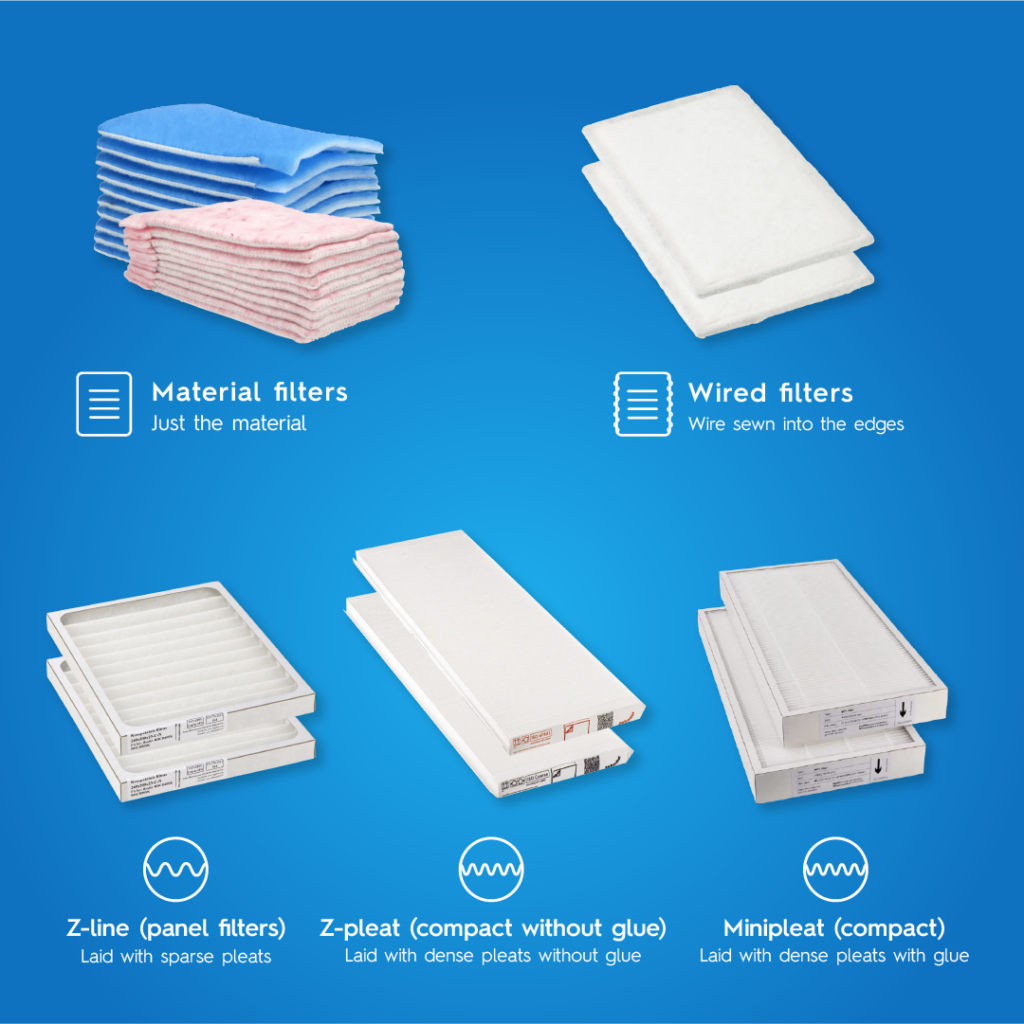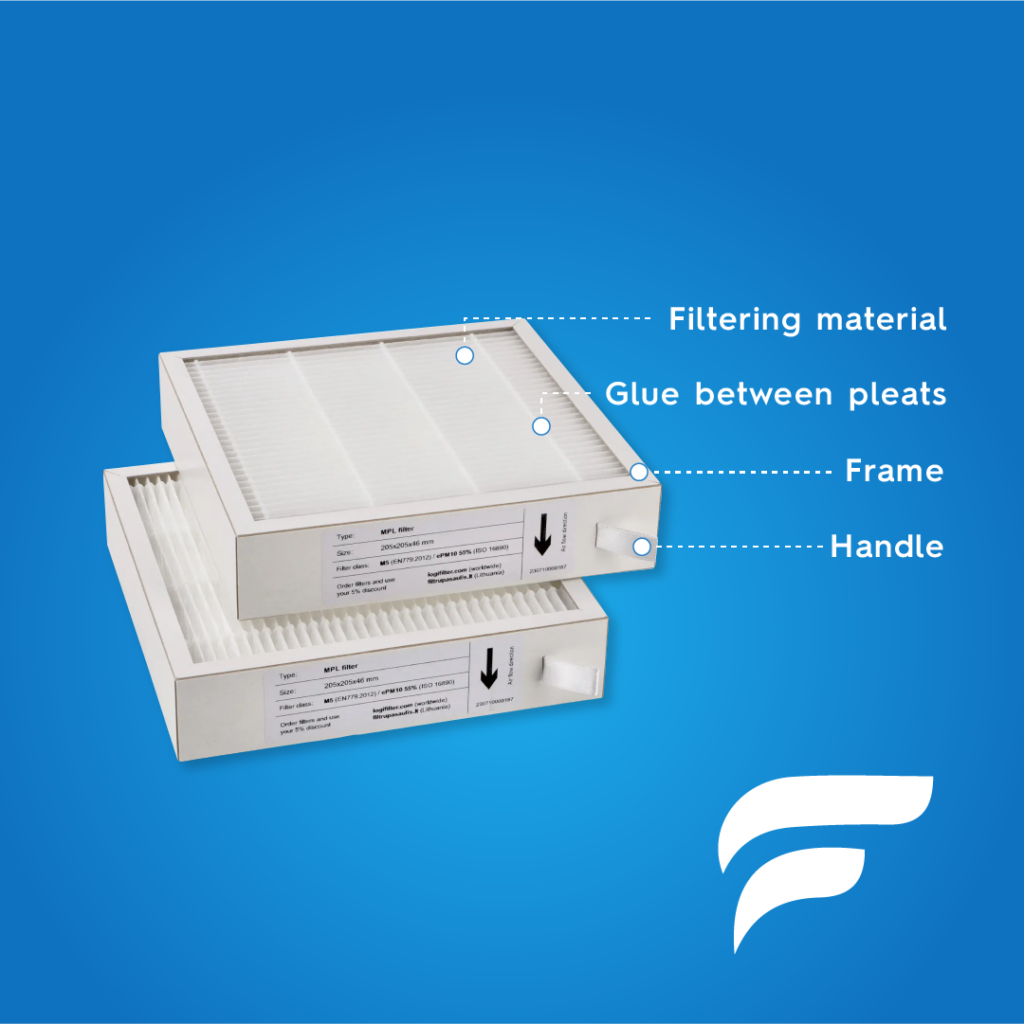Last updated: December 1, 2025
Installing a mechanical ventilation system with heat recovery (MVHR) in your home ensures a continuous supply of clean and fresh air by filtering out outdoor pollutants, unpleasant odors, city smog, and more. However, to keep your MVHR system running quietly and efficiently, it’s essential to regularly replace its filters.
Today’s market offers dozens of manufacturers, and filters themselves vary by class, materials, structure, and other characteristics. So how do you choose the right filters—ones that match your system’s specifications and your personal needs?
Number of Filters: When Are Two Used, and When Three?
Most MVHR units come with two filters—one filters the incoming air from outside, and the other cleans the exhaust air being expelled from your home. However, in some cases, MVHR systems use more than two filters.
For example, Brofer MVHR units support the use of an additional F7 filter alongside the standard G4 filters. This extra filter captures even ultrafine particles, making it an ideal choice for people who:
- Suffer from allergies or environmental sensitivities;
- Live in areas with high air pollution or smog.
Another example is the Blauberg brand, whose three-filter system is especially useful for newly built or recently renovated homes. The third filter helps clean the air of construction dust and fine debris, speeding up the process of achieving a clean indoor environment. This filter fills up with particles in the first few months, after which it’s removed, and the system continues operating with the standard two filters.
That said, most MVHR systems use two filters, a standard configuration that reliably ensures clean air delivery while protecting the unit from household dust and particles.
Types of MVHR Filters
Aside from the manufacturer, one of the most important factors in selecting a filter is its type, which also influences the filter’s design and materials. Based on the structure and texture of the filtration media, filters generally fall into these main categories:

- Fabric Filters. Most fabric filters fall into the G3 or G4 class. Because the material is flexible, these filters are usually installed in special frames or secured with a built-in clamping mechanism. Brands like Mitsubishi and Atrea offer this type.
- Wire-Supported Filters. These filters use wire to support the filtration material and give it structure. You’ll find them in Brink systems.
- Z-Line (Panel) Filters. These filters consist of synthetic media folded in loose pleats and mounted in a cardboard frame.
- Z-Pleat (Compact, Glue-Free Filters). Among the highest-quality filters, Z-pleat designs use tightly packed pleats without glue. They maintain their shape and effectiveness throughout their lifespan. Available from brands like Zehnder.
- Activated Carbon Filters. Specialized for odor removal, these filters are not effective for particle filtration but are very useful in areas where unpleasant smells may enter from outside.
- Minipleat (Compact Filters with Glue).These are similar to Z-Line filters but with densely pleated media bonded together with glue, ensuring uniform filtration across the surface. Common in systems from Komfovent and Ensy.
Components of an MVHR Filter
Depending on the filter type, class, and manufacturer, MVHR filters may include a variety of components:

Key Filter Components
- Filtration Media. May be synthetic or fabric-based, and vary from single-layer, loosely pleated materials to densely pleated multi-layer designs.
- Glue. Used in higher-class filters to ensure a tight seal and prevent deformation of the filter media.
- Frame. Often made from cardboard, though premium brands like Zehnder use plastic frames to ensure authenticity and prevent counterfeiting. Metal frames are more common in large commercial systems but are not suitable for humid environments due to rust risk.
- Handles. Some filters include small handles for easier installation or removal, though this feature is less common and not essential.
What Can the Filter’s Name Tell You?
Filter names may look long and complicated at first glance—especially when shopping online—but they’re not difficult to decode. Start by matching the filter’s name with your MVHR unit model. You can narrow down your search by choosing the correct filter manufacturer or using filters to search by brand.
At the Filtrų Pasaulis online store, filters are also labeled as either original or compatible alternatives. This helps distinguish between filters made by the original manufacturer and third-party versions. While well-chosen alternative filters can work just as effectively, they may differ slightly in material composition or design nuances compared to original filters.


